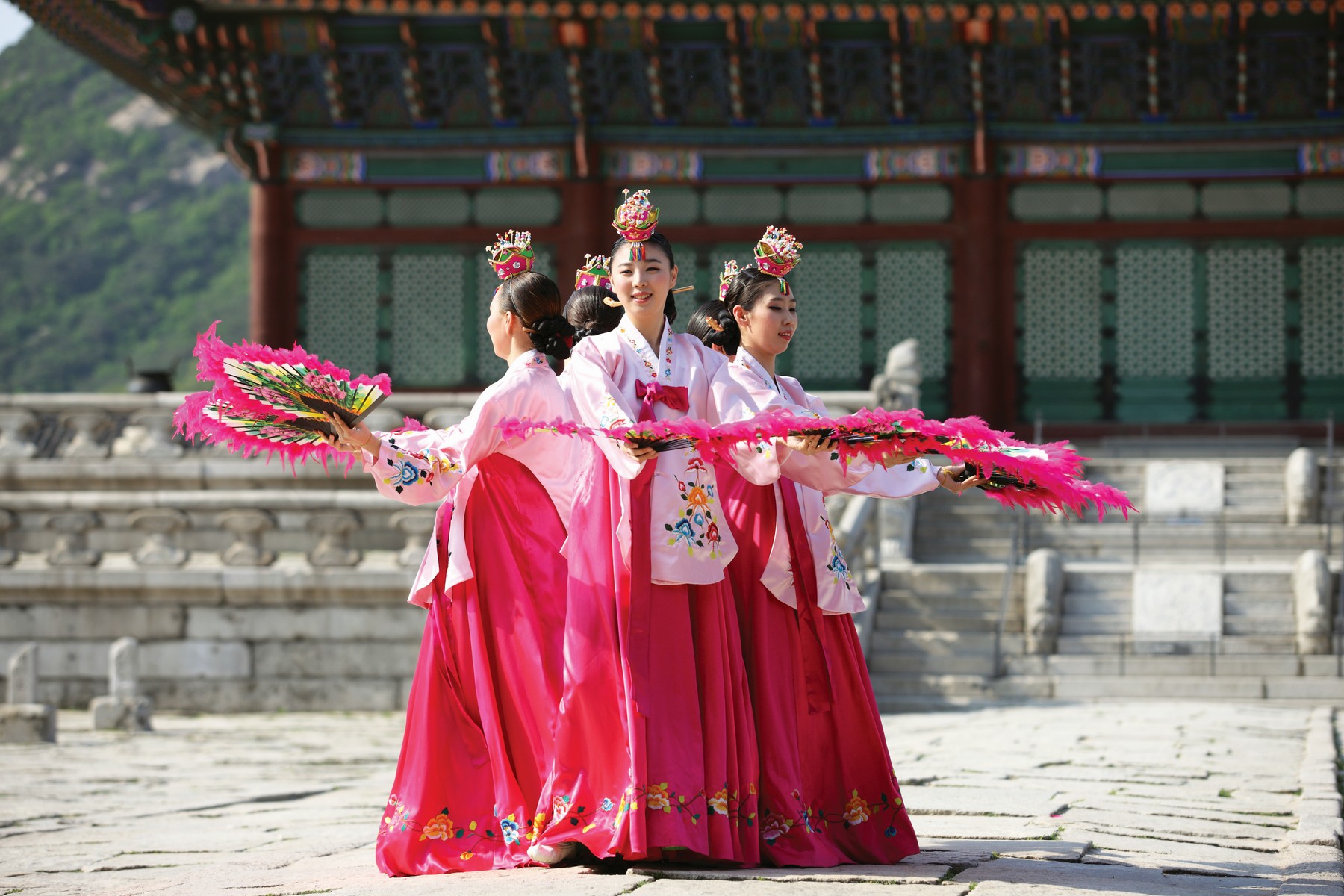Korean people have inherited a great variety of folk dances such as salpurichum (spiritual purification dance), gutchum (shamanic ritual dance), taepyeongmu (dance of peace)
, hallyangchum (idler’s dance), buchaechum (fan dance), geommu (sword dance), and seungmu (monk’s dance). Of these, talchum (mask dance) and pungmul nori (play with musical instruments) are known for their satirical targeting of the corrupt aristocracy of Joseon and their close connection with rural communities, which had long been the bedrock of Korean culture and tradition. Most performances are presented in a marketplace or on the fields and involve drumming, dancing, and singing, all of which are used to create a highly elated atmosphere.








